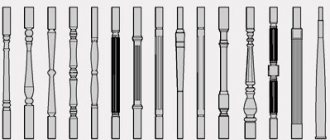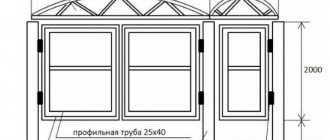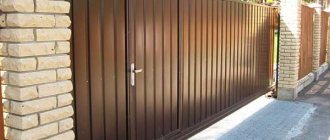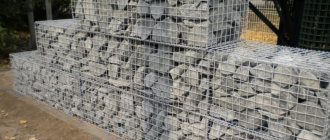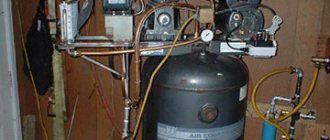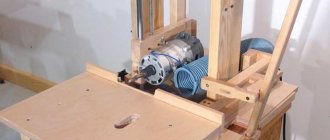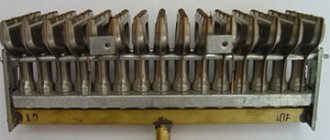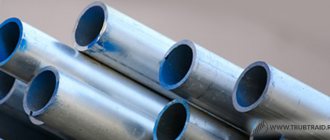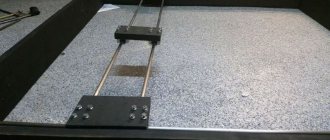In the last few years, many have been making gabions with their own hands, using step-by-step instructions from specialists, as these structures are becoming increasingly popular as elements of landscape design. Meanwhile, gabions, which are three-dimensional structures made of metal mesh, the inside of which is filled with stone, crushed stone or pebbles, have been used for a long time. Initially, they were used to strengthen river beds, hillsides and ravines, and create military structures. Along with high strength and stability, such structures, consisting of stones placed in a metal mesh, are exceptionally decorative. Landscape designers paid attention to this and began to create various elements from gabions for the design of personal plots.
Gabion fence
What are gabions and what are they made from?
As mentioned above, gabions are three-dimensional structures made of a mesh made of metal wire, the inside of which is filled with various materials. The following materials can be used:
- artificial and natural stone of various fractions;
- crushed stone;
- pebbles;
- wood scraps.
Gabion construction process
The supporting structure of the gabion is made in the form of a mesh, for the manufacture of which steel wire with a diameter of 2 to 8 mm is used. Since such structures are operated outdoors, in rather unfavorable conditions, double twisted wire is used for their manufacture, the surface of which is coated with a protective layer of zinc or PVC.
For gabions, meshes are most often used, the cells of which are hexagonal in shape, but products with rectangular and square cells are also found. To give such structures greater rigidity, a frame is used, which is made of metal reinforcement. The walls of large gabions, so that they do not deform under the influence of the filler material, are strengthened with additional sectional compartments made of thicker wire or reinforcement.
Development of a box-shaped gabion product
If the production of gabions is carried out using natural stone, then such material can be:
- granite;
- basalt;
- slate;
- cobblestone;
- sandstone;
- quartzite;
- about;
- crushed stone;
- pebbles, etc.
Examples of filling gabions
When choosing the color and configuration of such stones, you can focus only on your taste preferences, but their size must meet certain requirements. So, if fences and other structures made of gabions are used under normal conditions, and not under water, then the size of the stones should be 25–40% larger than the size of the mesh cells. If gabions during operation will be constantly exposed to moving masses of water, you should use stones whose size is twice the size of the mesh cells.
Since gabions have an impressive weight, they are characterized by exceptionally high stability; they are not afraid of even serious soil movements. Fences made of gabions or similar structures for any other purpose settle over time, become compacted, filled with soil particles and overgrown with grass, which not only adds reliability, strength and stability to them, but also makes them even more attractive in decorative terms (this can be assessed even from the photo ).
Selection of stone material
Box-shaped containers are filled with stones with dimensions of 15-25 cm. For flat elements that are used as a base, it is necessary to select a filler with a fraction of 8.5-15 cm.
The material is selected depending on aesthetic requirements. To provide a fence or retaining wall with an attractive appearance, the front edges can be lined with large, neat stones, and cheaper aggregate can be used on the main volume. The use of local materials, such as gravel or crushed stone, is allowed (provided that the recommended fraction sizes are observed).
The most common applications for gabions
If previously gabions served as fortification and barrier structures, now they are not only used to make fences, but are also used for a wide variety of purposes. Thus, the most common areas of application of gabions today are:
- production of load-bearing elements of furniture installed on a personal plot (tables, benches, armchairs, chairs, etc.);
- production of decorative fences for framing lawns and flower beds;
- creation of retaining walls to strengthen hangars and other building structures;
- creation of such decorative elements of landscape design as stone gardens;
- construction of arches, partitions and durable flower beds, including those with vertical placement;
- creation of reinforcing structures for the coastline of rivers, lakes and ponds located in close proximity to construction structures;
- decorating the garden area;
- construction of staircase structures.
Gabion garden bench
Recently, gabions have been actively used to divide the local area into zones that perform different functions. So, by ordering the production of such structures from specialized companies or making gabions with your own hands, you can use them to separate a recreation area from the general territory of your personal plot, beautifully frame a flower bed or lawn, or zone the area where a stove, barbecue or outdoor shower will be installed.
Types of structures
Interesting decor with logs and candles
There are several types, each of which has its own scope of application.
Box-shaped structures "Jumbo"
Welded "Jumbo" system reinforcing a highway embankment
Box-shaped structures "Jumbo"
The most popular designs are those that resemble boxes or rectangular boxes stacked on top of each other. If the structure is too long, partitions (diaphragms) must be placed inside the box; the approximate step is 1 meter. This gabion fencing is made of soft mesh or steel rods welded into a cage shape.
The first is attached to a rigid frame, and the second itself has sufficient rigidity. The “Jumbo” type is well suited for mounting a fence, fence, table or bench stands, stairs, supports. It assumes uniform load distribution, strength, and clarity of shape is the key to aesthetic appeal.
Flat structures “Reno mattress”
This is what a mattress variety looks like
Flat structures “Reno mattress”
Their outlines resemble a mattress - rectangular, wide, low (up to 35 cm). Diaphragms are placed inside the cage to evenly distribute the load. "Reno mattresses" are made from rigid galvanized wire.
Cylindrical "Bags"
Cylindrical view
Cylindrical "Bags"
The gabion resembles a sausage; due to its shape, it lacks stiffeners and partitions. It is more flexible and pliable, which is convenient for giving unusual shapes. The bags can be laid on uneven terrain without fear of uneven pressure on the soil.
Decorative designs
Decorative mesh frames are sold ready-made
Decorative designs
They are created to decorate a site, give it zest and self-expression. Most often, gabions are used to create fancy labyrinths, flower beds, benches, fences, and garden figures. For the latter, a welded frame is made from thick wire, and for the remaining elements, you can purchase a sheet metal mesh and lay it in the desired direction.
How to make a children's house with your own hands: from wood and other materials. Drawings with dimensions | (80 Photo Ideas & Videos)
Advantages of using gabion structures
Often those who are planning to order or make gabions with their own hands wonder what advantages such structures have. The most significant of these advantages usually include the following.
- The construction of gabions does not require special construction equipment, which allows you to preserve the surrounding landscape in its original form.
- Due to the peculiarities of their internal structure, gabions perfectly allow air and water flows through them, without having a negative impact on the green spaces that grow inside such a fence.
- Grass grows on gabions in which soil accumulates over time, which makes the appearance of such structures even more attractive.
- Since the stones used for the internal filling of gabions are not fastened together in any way and remain mobile, such structures do not create significant hydrostatic pressure.
- Even with significant soil displacements associated with seasonality, gabions do not lose their integrity, but can only be slightly deformed.
- The strength and reliability of gabions only increases over the years: various plants gradually grow between the stones in the mesh, entwining them with their roots.
Gabion retaining wall
DIY gabion
Before you make gabions with your own hands, you need to decide which type is best for your suburban area. This means welded or captive. In the first case, you will have to purchase a galvanized rod, in the second, a ready-made mesh.
Mesh gabion
It is easiest to work with a knitted mesh, because it is a ready-made product - flexible but durable, from which you can assemble, in principle, any shape: cube, cylinder, sphere, etc. Here are step-by-step instructions for assembling a gabion with your own hands.
- The dimensions and shape of the structure are determined.
- If, for example, it is a cube, then two square sections are cut from the mesh, which will be laid in the form of a bottom and a lid.
- One of the sections is laid on the ground at the site where the fence is being built.
- At its corners, four metal pins are driven into the ground. Depending on the size of the gabion, the driving depth varies between 0.5-1.0 m.
- A mesh is wrapped around the perimeter of the pins, which is tied to the frame with knitting wire. It is also attached to a piece on the ground around the entire perimeter. The edges of the solid sidewall are overlapped, where they are also secured with wire.
- Backfilling with stones is in progress.
It is necessary to dwell in more detail on the backfill for gabions. If the height of the structure exceeds half a meter, then filling with stones must be carried out in three stages, dividing the height evenly into three sections. After each laying layer, several rows of wire are stretched between the opposite sides of the structure.
Essentially, a mesh base should form inside. It will hold the gabion in shape, because the stones in their mass have a lot of weight and create quite a lot of pressure on the walls. Therefore, it is necessary to create conditions so that the gabion does not lose its shape and does not fall apart.
Without any standards, you can build a cylindrical or round structure with your own hands. To do this, you just have to make a metal frame from a rod or reinforcement. Here you will need electric welding; tying frame elements together with wire is not recommended. Not the same strength of connection.
Welded structures
Welded galvanized gabions can be made with your own hands if you know how to use a welding machine. Of course, no one requires high qualifications when welding reinforcement for these products, but the skills will still come in handy.
To assemble welding structures, you will first need to cut the rods to a certain length, equal to the dimensions of the gabion itself. In this case, it is necessary to align them linearly, because according to GOST, the rod comes in coils. And then it’s up to the welder.
- If welded gabions are assembled in a cubic shape, then six identical grids are welded.
- After which they are connected to each other into a cubic shape and welded at each junction of the rods. The more welding points, the stronger and more reliable the lattice structure.
If you don’t have a welding machine, if you don’t have the skills to work with it yourself, then you can try tying the rods together with knitting wire. It will take more time, but the quality of the connection will be no lower than welded. In any case, GOST confirms that in this way it is possible to produce a reinforcing frame for foundations. Why can’t you collect gabions like this? The main thing for this design is more attachment points.
Cylindrical gabions can also be produced by welding. Since the rod comes in coils, it is cut to fit the diameter of the cylinder into several sections. To connect the latter, you will need a frame of the same rod - these are several longitudinally cut pieces onto which rings from the rod are put on and welded to them.
The more longitudinal elements and rings, the smaller the cell sizes, and vice versa. Strengthen the structure additionally with binding wire; the consumption is small, but the reliability increases two to three times.
Types of gabions and features of their design
Before deciding how to make gabions yourself, you should understand their design features, which depend on the type of structure. According to the generally accepted classification, gabion structures are divided into the following types:
- box-type gabions;
- flat gabions;
- cylindrical type structures.
Main types of gabions
A box-type gabion is often also called Jumbo. This design, in addition to its box-shaped shape, is distinguished by the fact that its grid cells are hexagonal or quadrangular. Box gabions are the largest of these structures; they can be two meters wide, six meters long and a meter high. Overall box-shaped gabions, as a rule, are equipped with additional partitions that serve to strengthen their walls, and the frame of such structures can be made not only from twisted mesh, but also from welded mesh.
The main areas of application for box-type gabions are:
- production of structures that protect soil from erosion;
- production of retaining walls;
- strengthening slopes, erecting gabion fences, etc.
Structural diagram of a box-shaped gabion
Gabions, which are of the cylindrical type, are often called bags. Such structures, characterized by increased flexibility, are used primarily to strengthen foundations located under water.
The main areas of application of flat gabions (Reno mattresses), the height of which can be in the range of 17–30 cm, are:
- creating the basis for the construction of retaining walls;
- carrying out landscaping work;
- ensuring fixation of bridge cones;
- strengthening river beds and coastal zones;
- construction of protective structures for pipelines.
The history of gabions
The ancestors of gabions appeared in the 16th century. The military was the first to use them. The artillerymen took wicker baskets that had no bottom, filled them with earth or stones, and covered their guns with these structures from enemy fire. Such a gabion wall saved both from bullets and from enemy cannonballs.
Time passed, and builders paid attention to gabions. It turned out that large cells can be useful for them too. To begin with, they made the frame more durable - it became metal. Gabions filled with stones began to be used to strengthen slopes to protect them from landslides and erosion. They also found use for it in the construction of bridges and roads.
Some more time passed, and the gabion came to the attention of landscape designers. They added a little creativity and the boring check became an original piece of decor. Now in landscape design, gabions are used no less often, and even more often, than in construction.
How to make a gabion yourself
There are many companies on the modern market for which the production of gabion structures is one of their main areas of activity. From such companies you can order a turnkey fence made of gabions or a structure made of mesh and stones for any other purpose. To save on such services, you can make gabions with your own hands, strictly following the recommendations of specialists.
So, in order to make your own gabion, you need to develop a project for the future structure, taking as a basis, for example, a photo from the Internet. To develop a project you need to perform the following steps:
- take measurements of the area where the future structure is planned to be installed;
- mark the installation location of the gabion;
- draw up a drawing of the future structure indicating all its dimensions;
- select gabion filling material;
- calculate the amount of materials from which the structure will be made.
Scheme of a retaining wall made of box-type gabines
It should be kept in mind: in order to ensure that you definitely have enough materials, their quantity, which will be obtained as a result of the calculations made, must be multiplied by 10–15% (and purchased with such a reserve). When choosing a mesh for your future gabion, pay attention to products with double torsion. This mesh is more flexible, but also has higher strength and reliability.
What you need
In order to make gabions with your own hands, you will need the following consumables:
- staples, with the help of which two adjacent walls of the structure will be connected (instead of such staples, if they could not be purchased, you can use spiral wire);
- geotextiles;
- steel pins, which are necessary in order to fix the structure being created at the site of its installation;
- steel braces used as elements to tie two opposite walls of a gabion.
Tools for work
In addition, to make a gabion with your own hands, you must prepare certain tools:
- pliers;
- mount;
- plumb line;
- shovel;
- hammer.
Since when making gabions you will have to work with steel wire, it is better to perform all work with gloves made of thick fabric.
The stability, reliability and strength characteristics that characterize such metal mesh structures filled with stones allow you to use them to form hills and depressions in your garden plot, to create artificial reservoirs and other structures for decorative and practical purposes.
Selection of metal mesh
How to make a gabion so that it lasts for a long time and delights with its decorative characteristics? First of all, you must choose the right mesh. Ready-made mesh structures are required for the manufacture of flat-type gabions. Gabions of this type are used for framing flower beds, lawns, constructing fountains and artificial reservoirs. Considering the fact that such structures will be used in open air and in rather unfavorable conditions, you should choose a mesh for their manufacture only with a protective coating, which can be zinc or a PVC layer. It should be borne in mind that for gabions, wire with a diameter of less than 2.7 mm is not used.
The higher the calculated load, the larger the diameter of the gabion wire required
Creation of gabions from welded mesh
Gabions, the structural elements of which are connected by welding, are made from thicker wire, the thickness of which, however, should not exceed 0.8 cm. The pieces of wire from which such structures are created are laid perpendicular to each other, and connected at intersections by welding. Using a similar technology, you can make a gabion fence with your own hands by filling the inside of the welded mesh structure with coarse stones.
When installing columnar gabions, it is recommended to use welded structures, especially if they will bear additional load (wickets, gates or spans)
A mesh made from large diameter wire pieces connected to each other by welding is used to create:
- foundations of the structure;
- supporting elements;
- supporting elements of the structure.
When using welded mesh for the manufacture of gabions, it is better to connect all the elements of the structure being created by welding: this will make it more reliable.
Selection of material for filling gabion structures
One of the most difficult issues that you have to solve when making gabions with your own hands is the choice of material with which such a structure will be filled. The criteria in this case are:
- taste preferences;
- financial opportunities;
- conditions under which the created object will be operated.
When choosing a filler for a gabion, first of all you should take a closer look at the materials available in your area
In addition to the natural stones already mentioned above, the following materials can be used to fill gabions:
- whole or broken brick;
- broken tiles;
- pieces of plastic pipes;
- wood cuts;
- car tires cut into pieces;
- aluminum cans;
- large cones;
- pieces of tree bark, etc.
Gabion laying technology
The actual technology for laying gabion structures is quite simple. But in order to achieve the expected result, it is necessary to take into account the manufacturers’ recommendations, read the instructions, and also follow the main steps. Only in this case can you achieve an acceptable result by spending a little time.
Preparatory activities are carried out in advance. Their essence lies in preparing the surface on which installation will be carried out, as well as assembling gabions.
The surface on which installation will be carried out must be cleared of debris and vegetation. This will allow the mesh and filler to be positioned smoothly. In addition, it is necessary to partially level the terrain if the differences are really large.
Brief instructions for making a fence from gabions
To ensure that the gabion fence you are planning to make with your own hands pleases you with its reliability and decorative characteristics, you can use the following step-by-step instructions.
- The area where the gabion will be installed is cleared of plants, stones and leveled.
- To accommodate the support pillars of the structure being created, holes are dug 0.4–0.5 m deep.
- The supporting pillars of the structure are installed and poured with concrete.
- After the concrete has hardened (after three to four days), the structure frame is mounted around the support pillars. The latter is connected to the support pillars using bolted connections or clamps.
- The cut end parts of the wire are treated with a protective compound.
- The inside of the mesh frame is filled with the material selected for these purposes.
- A cover is installed and fixed on the upper part of the structure.
The process of creating a gabion is divided into three parts: installation of supports, installation of the mesh frame and filling it
When filling the inside of the frame with stones, you should not forget to install ties on the opposite walls of the structure, which will keep them parallel to each other. If the gabion frame is a structure made of reinforcing bars, then the distance between them can be increased using chain-link fencing.
There are many options for how to make a structure such as a gabion with your own hands. This variety allows you to decorate your garden plot with unique decorative elements with minimal financial costs.
What to consider before starting construction
Prepare materials, equipment, take clear measurements
The gabion group must be strong, stable, safe, and aesthetically beautiful
To meet these criteria, it is important to do the following:
- carry out correct installation
- purchase quality materials
- think over ways to fasten the walls (wire, welding)
- choose the specifics of laying the filler (chaotic filling is unacceptable)
- choose frame, fasteners
It is best to purchase ready-made gabions, which are created in accordance with GOST and TU standards. If you still decide to make the cage walls yourself, carefully study the requirements and strictly adhere to them.
How to make a dog house with your own hands: arrangement of housing in the yard and in the apartment. Drawings, dimensions and original ideas (55+ Photos & Videos) + Reviews
Application in landscape design
Having considered the types of gabions, we can say that the scope of their use is wide. They can:
- Serve as supporting structures
- Become a slope terracing material
- Used to strengthen the bottom and banks of reservoirs
- Frame flower beds, decorative compositions
More original ideas are also possible, which can be brought to life using filled mesh frames:
- Fences that can either limit the territory of the entire site or divide the space within the perimeter. In this case, zoning of the territory occurs, which complicates the design of the site. Gabions are especially compatible with green fences, but it is possible to build an independent fence from them.
For zoning, it is not necessary to use high fences; these can be low curbs.
- Outdoor hearths and fireplaces can also be made from gabions. However, in order for their operation to be safe, it is necessary to select a filler that is resistant to high temperatures. Not every stone is suitable for these purposes.
- Benches, dining tables and tea tables made of gabions, complemented by wooden or glass details, will be a useful decoration for the relaxation area. Such furniture is much more durable than usual and does not deteriorate at the base.
- Columns for gazebos or tents, which are the basis for the roof of a building.
- Decorative sculptures made in the form of animals and geometric shapes, compositions with abstract shapes.
- Original lamps if you place an LED strip inside.
The most suitable type of construction for most of the options listed is box-shaped.
